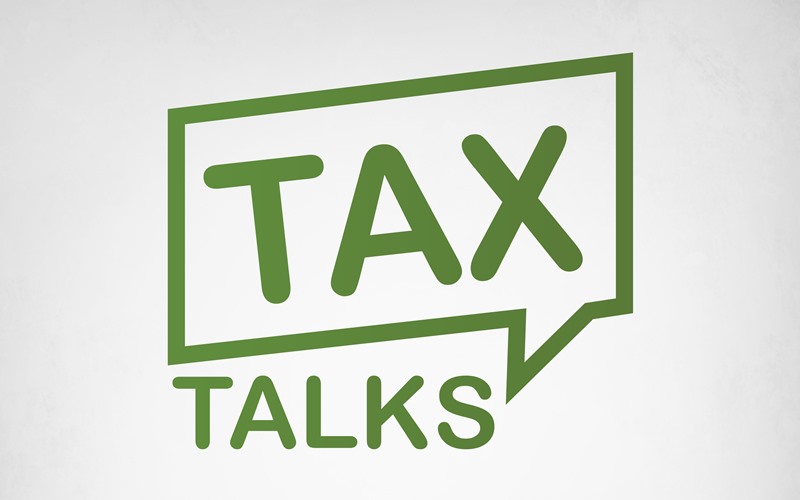August 31, 2022

2022 is shaping up to be a very strange year for dairy producers. Despite the unprecedented high prices for inputs such as feed, fertilizer and fuel, most dairy farmers will still be looking at much higher taxable income for 2022 due to strong milk prices that have persisted throughout the year. This will make tax planning prior to year-end imperative for farmers to avoid substantial liability when they have their 2022 taxes prepared. Keep in mind, there’s nothing wrong with paying income taxes, in most cases it’s a positive sign that you’re making money, but like any other business expense, you need to understand what’s driving the amount you owe and how you can manage to minimize the “tax bite.”
First and foremost, you need to have a good record keeping system in place to accurately detail your farm income and expenses. If you wait until the dark, cold months of January and February to do your books for the year when there isn’t much else going on, you’re not going to have the opportunity to accurately tax plan.
Keeping books current throughout the year also helps ensure transactions are categorized correctly while they’re still fresh in your mind instead of having to guess what they were months later. Also, don’t rely on the premise that since there’s no money left in the farm checking account at the end of the year, we must not have a tax problem. Family living expenses such as groceries, personal residence expenses, college tuition, etc. are not tax deductible. Remember, only interest paid on loans can be deducted as a business expense, not principal payments, so if you’ve used the extra income generated throughout the year to pay down debt, you could still have a tax issue even with no money left in your account.
For most of our clients, we like to get together in early- to mid-November to tax plan. At this point, most of the major expenses for crop harvesting are done and we only have to estimate the last two months of income and expenses. This time frame can vary depending on the client and how involved the year-end plan will be.
Certain tax strategies such as deferring milk income or major asset purchases may need to be implemented earlier to get the transaction completed by the end of the year.
Tax planning is usually a four-step process:
- determine what your current taxable income is to date;
- project income and expenses through the end of the year;
- calculate the tax liability on that income;
- figure out what adjustments you can make to your tax liability based on that outcome.
For example, if you meet with your farm financial advisor in November, and you determine your Schedule F farm profit for 2022 will be $95,000, raised cow sales will generate another $20,000 and you’ve got a $15,000 gain on a piece of equipment that was traded, that represents a taxable income of $130,000. If you are filing a married filing jointly return and you had no other outside income to add, your federal tax liability would be approximately $20,440 on the farm income alone. This is your starting point to determine if the amount of tax owed ($20,440) is acceptable or if you can adjust your income/expense prior to year-end to get your tax liability to a more desirable level.
In the example above, most of the tax liability ($18,640) is due to the Schedule F profit of $95,000 as you have to pay both ordinary income tax and the additional self-employment tax of 15.3% on that amount. The $20,000 of raised cow sales is capital gain income and since we’re in the 12% tax bracket, the tax rate is 0% on them and the tax on the equipment gain of $15,000 is only $1,800. This tells us we need to concentrate on managing the Schedule F profit to make any big difference in the tax owed.
Almost all farmers report their income and expenses on a cash basis, rather than accrual. This gives farmers a lot of flexibility when tax planning. For example, if you get a $10,000 load of feed delivered on 12/30/22 and you normally pay the bill 5 days later to get the cash discount on 1/4/23 then that $10,000 feed expense goes into 2023. However, if you write the check on 12/31/22 then it’s a 2022 expense. The same scenario holds true for income, if you send a cull cow to the auction on 12/30/22 but don’t get the check for her until January of 2023, then that income is reported in 2023.
Cash basis means income or expense is recognized on the date the cash is received or paid regardless of the date the item/product was sold or purchased. A word of caution, if your milk check is in your mailbox on December 30 and for tax planning reasons you decide not to deposit it until January 1, the IRS has a rule called constructive receipt, meaning if the cash is available to you on December 30 and you choose not to physically retrieve or deposit it until January 1, then it is still reported in the prior year when it was made available to you.
Our next Tax Talks blog will build on this foundation to understand what adjustments you can make to your tax liability if you’re reporting on a cash basis.
Tax Strategies for 2022: Tax Planning for Cash Basis Reporting
Farm Credit East is ready to talk tax planning for your business. Now may be a good time to get your recordkeeping in order and reach out to your relationship manager to see what can be done to manage the impact of 2022’s high milk prices on your operation.




